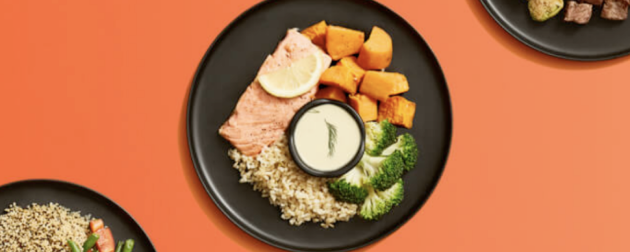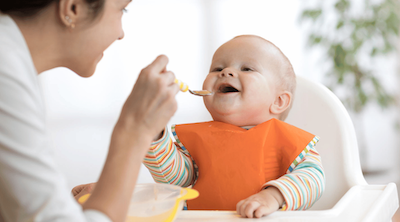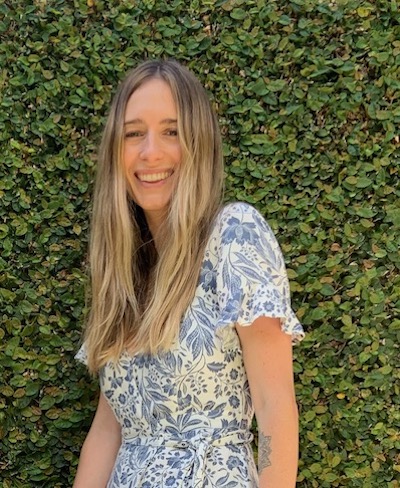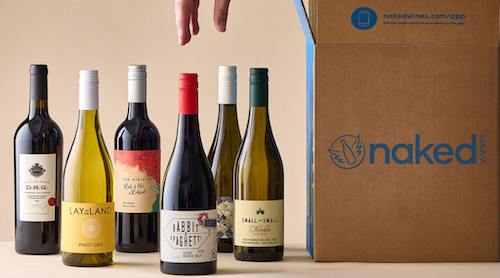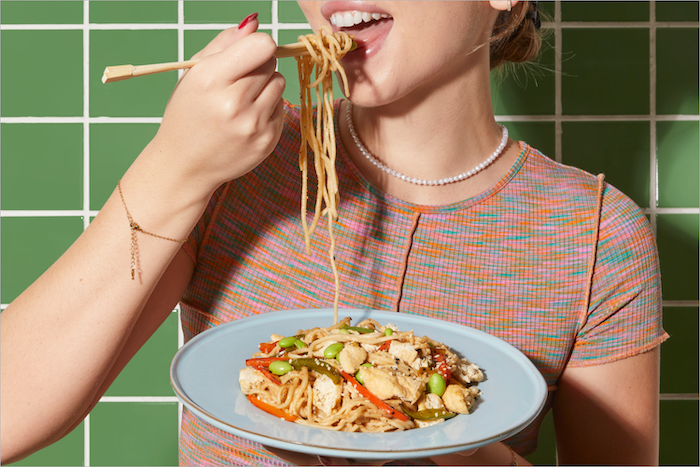Learn how to start your baby on solids with our sample meal planner! From purees to baby-led weaning, discover tips, recipes, and tools for a stress-free feeding experience.
Here we go… Starting Solids! As I embark on my second time around starting solids with a 5, almost 6 month old I’m reminded that one of the largest jobs that comes with parenting starts NOW. Once you start making food for these bébés, you never stop. It’s exciting to jump into solids thinking about all the wonderful tastes and flavours you’re going to be introducing to your little one as you expand their palette across all the different flavours of the world… But here comes a lot of time, effort, food wastage, patience and the most important word – Mess. All I can say here is ‘embrace the mess’. Today’s teachings are to let babies explore flavours and textures not only with their mouths but with their hands, working on their fine motor skills. They may grab the spoon of puree and jerk their arms suddenly, sending pumpkin puree across the room or tip a bowl of chicken soup on their head but that’s all part of the fun – and usually makes for a great pic. What fun to be a baby trying all these new things!
Here we’ll jump into the basics of what to do to get the ball rolling with first foods. It can seem daunting but really it’s quite simple once you’re comfortable with what you’re doing. I like to organise a list of different purees to start with and make sure I’ve got the right cookware, utensils, appliances for pureeing, self feeders and storage.
- What age do I introduce solids to my baby?
- How do I know if my baby is ready to start solids?
- What time of day is best to introduce solids to my baby?
- Which food should I introduce first to my baby?
- What consistency should baby puree be?
- What temperature should I serve baby food?
- Choosing the right cookware and utensils for making baby food
- Self Feeders
- BLW (Baby-Led Weaning)
- What are the top allergenic foods?
- When should I introduce allergens to my baby?
- What are the signs of an allergic reaction?
- Organic Produce: Benefits for Baby
- What foods should I avoid when starting solids?
- FIRST FOOD PUREES – 6 months
- 1 Week – Sample Meal Planner
What age do I introduce solids to my baby?
The Australian Breastfeeding Associations’ current recommendation is to introduce solids to your baby at around 6 months but not before 4 months. It’s important to note that every baby is unique, and readiness for solids can vary. However, it is generally recommended that all babies begin consuming solid foods by the time they reach 7 months old to ensure they receive the necessary nutrients for their growth and development.
How do I know if my baby is ready to start solids?
There are several indicators that can help you determine when it’s the right time to introduce solid foods to your baby:
- Development of head and neck control – Your baby should have good head and neck control and be able to sit upright with some support. This indicates that they have the physical ability to manage solid foods and swallow safely.
- Curiosity about food – If your baby shows interest in what you’re eating and pays attention to the food around them, it might be a sign that they are ready to explore solid foods. They might watch you while you eat and reach out for a bite!
- Mouth opening for food – When you offer your baby food on a spoon if they actively open their mouth in anticipation or excitement, it suggests that they are interested in trying new tastes and textures.
By observing these signs of readiness, you can confidently introduce solid foods to your baby!
What time of day is best to introduce solids to my baby?
The best time to start solids is after a nap and a milk feed when your baby is well rested and not too hungry. Mid-morning or lunch time is my preferred time to introduce foods so that I know Bub will be awake for a little while after eating so I can keep an eye on them for any reactions and am not sending them to bed with a risk of regurgitating up any food.
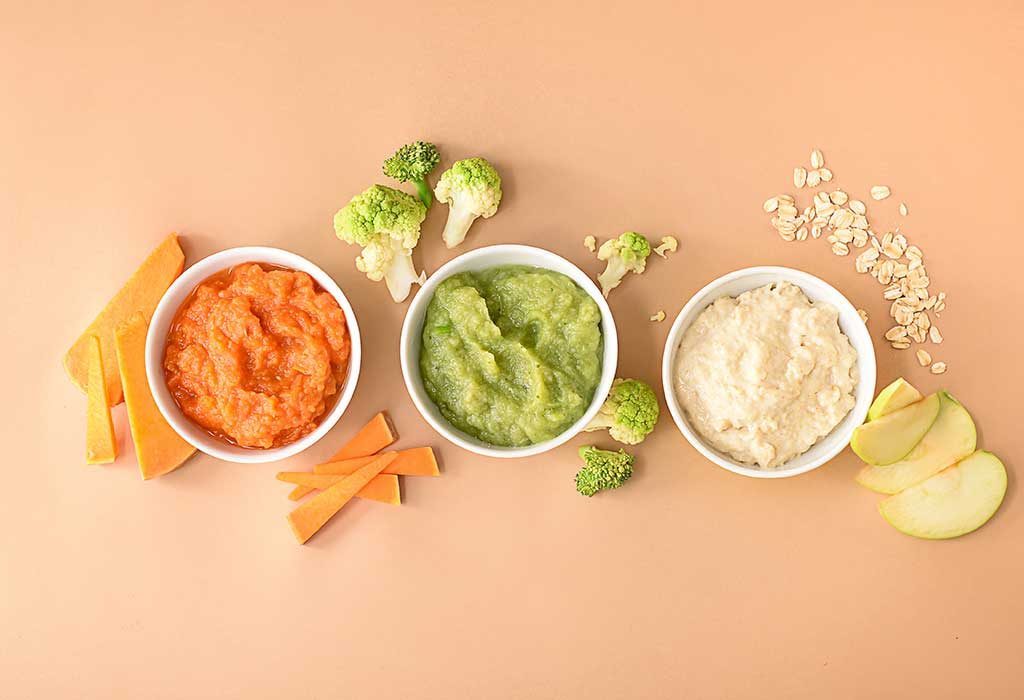
Which food should I introduce first to my baby?
I like to go for easily digestible foods like:
- Avocado
- Sweet Potato
- Pear
- Carrot
- Pumpkin
- Apple
You can also start on baby rice cereal if you’d like them to eat something straight away that’s iron enriched. After a few days of introducing these foods you can start to do some combination purees or if baby-led weaning (BLW) you can offer a couple of different ingredients at mealtimes.
What consistency should baby puree be?
When introducing purees to your baby for the first time, we’re looking for a semi-liquid consistency. I like to try and emulate the consistency of the baby food pouches with the 4+ or 6+ stamps on them, or think of runny custard.
What temperature should I serve baby food?
I’m a firm believer that you shouldn’t get your baby to expect a certain temperature because further down the line it’s easier for feeding Bub on the go if they can tolerate cold food. However, in the first week you may like to warm their meal to body temperature just like their milk so it’s not such a shock.
Choosing the right cookware and utensils for making baby food
For purees I love my Scanpan stainless steel steamer set and a good stick blender or a Nutri bullet to blitz it all up. When cooking for bub I like to try and avoid plastic as much as possible so it’s stainless steel pots for cooking, glass jars for blending (I use a Pyrex glass measuring cup) and silicone storage cups/ice cube trays like the Haakaa Baby food and breast milk freezer tray or the Bebe Bites baby food storage.
If you’d rather use an all-in-one appliance, the glass and stainless steel designed Beaba Babycook Neo steams, cooks, blends and reheats/defrosts your purees for you.
Self Feeders
When steaming, baking or sautéing ingredients for a puree I like to save a piece of cooked fruit or veg to stick in a self feeder which I offer to my baby while I’m blending the puree. I have a Haakaa Fresh Food Feeder and a Boon Pulp Silicone Feeder. They’re both awesome and do the same thing, they’re just different sizes. You pop the piece of cooked veg or ripe fruit into the silicone pouch, re-attach the holder to lock it in and hand it to your baby so they can suck and gnaw and explore this wonderful new thing to put in their mouth that squeezes out tiny little mushed up bursts of flavour (bits of food) as they gnaw at it! Sometimes nothing stays in their mouth and bits of mush are all over their face and clothes, but then you can be surprised like I was the other day watching my baby eat a whole tablespoon of avocado through it all by herself.
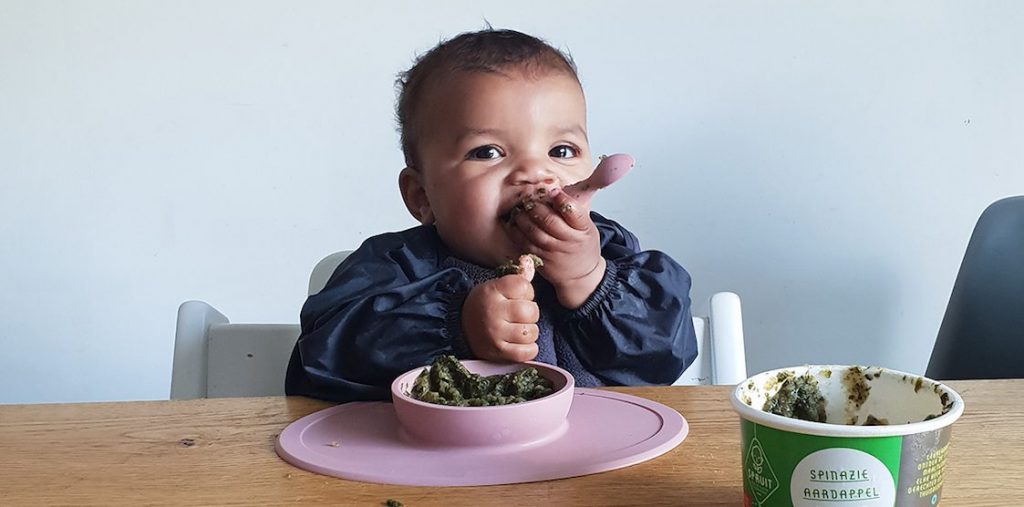
BLW (Baby-Led Weaning)
Another option is to offer your baby a piece of cooked food without the self feeder which is called baby-led weaning (BLW). The idea here is that babies learn to self feed with finger foods. These finger foods must be able to squish between your fingers when pressed to be safe for BLW and bed served in large enough pieces that they aren’t a choking hazard, so you would offer a roasted strip of sweet potato, a steamed cauliflower floret, a soft strip of grilled chicken breast, a slice of avocado, etc. For first foods, all fruit must be ripe and all veg must be cooked as a rule of thumb to make sure they’re soft enough to be mushed up with babies gums and tongue to not create a blockage that could restrict their airways.
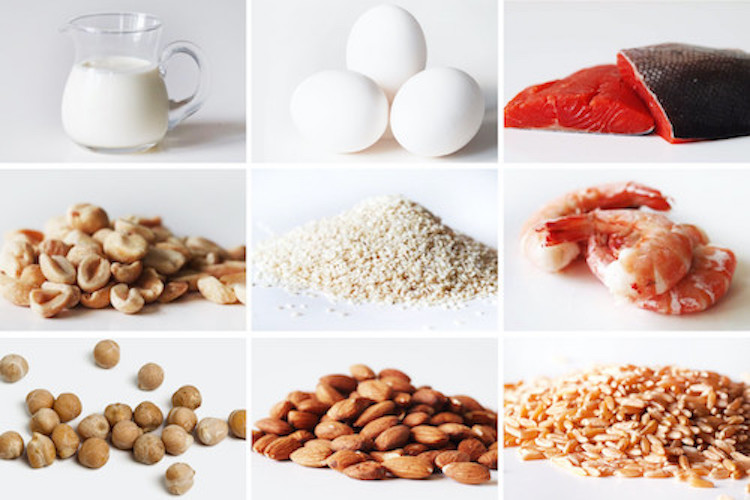
What are the top allergenic foods?
The top 9 food items that pose a high risk and account for 90% of food allergies are:
- Chicken eggs
- Peanuts
- Tree nuts
- Sesame
- Fish
- Shellfish
- Soy
- Wheat
- Dairy/Cow’s milk
When should I introduce allergens to my baby?
The Australian Society of Clinical Immunology and Allergy (ASCIA) recommends introducing common allergens to your baby before 12 months of age to aid in the prevention of developing allergies. This advice is relevant for all babies, including those with severe eczema, existing food allergies, or a family member (parent or sibling) with allergies.
Current guidelines recommend to repeatedly introduce the most allergenic foods to reduce the likelihood of developing an allergy. Essentially, this involves incorporating these foods into a balanced diet on a regular basis.
What are the signs of an allergic reaction?
Common food allergy signs and symptoms include:
- Skin reactions: Look for hives or eczema flare-ups, itching pr rash.
- Digestive symptoms: Watch for vomiting, diarrhea, nausea, pain or the presence of blood or mucus in the stool.
- Respiratory issues: Pay attention to wheezing, coughing, or difficulty breathing.
- Facial swelling: Swelling of the face, lips, tongue, or throat.
- Nasal congestion: A congested or runny nose, along with sneezing.
- Eye-related symptoms: Watery, itchy, or red eyes can be a part of an allergic reaction.
- Oral symptoms: Look for swelling or itching in and around the mouth, as well as tongue or lip swelling.
- Changes in behavior: Unexplained irritability, excessive crying, or trouble sleeping could indicate an allergic reaction.
- Anaphylaxis: In severe cases, a baby may experience a life-threatening allergic reaction characterized by a sudden drop in blood pressure, difficulty breathing, and loss of consciousness. This is a medical emergency that requires immediate attention
If you suspect your baby is having an allergic reaction to a specific food, it is important to stop feeding your baby the food and seek medical attention from your healthcare provider if it is not an emergency.
Organic Produce: Benefits for Baby
I like to try and buy organic produce as much as I can in these first months. Organic foods are not healthier, per say, in terms of nutrients. You are still getting the same benefits in conventionally grown foods as you are in organic foods however organic foods have been shown to have lower levels of toxic matter like heavy metals, synthetic fertiliser and pesticide residues. Our little ones are just so little so if I can avoid exposing them to pesticides and nasties, I’ll give it my best shot!
What foods should I avoid when starting solids?
Foods to avoid until 12 months:
- Honey
- Cows milk as a drink – small amounts used in cooking is fine
- Goats milk as a drink – small amounts used in cooking is fine
- Foods high in added sugar
- Foods high in salt
So without further ado, here’s a list of single and combination purees along with a first week Sample Meal Planner to get you and your bub into the world of SOLIDS!
FIRST FOOD PUREES – 6 months
- Carrot puree
- Sweet potato puree
- Apple puree
- Banana puree
- Pear puree
- Parsnip puree
- Mango puree
- Potato and Broccoli puree
- Apple, Blueberry and Cinnamon puree
- Potato, Leek and Broccoli puree
- Spiced Pumpkin, cauliflower and zucchini puree
- Peach and Papaya puree
- Avocado and banana puree
- Berry, apple and quinoa puree
- Carrot and Apple puree
- Autumn Harvest puree
- Summer Fruits puree
- Sweet Potato and Broccoli puree
- Pumpkin, Pea and Spinach puree
- Strawberry, Plum and Cinnamon puree
- Pumpkin and Cauliflower puree
- Cauliflower, Swede & Thyme puree
- Roasted Carrot, Swede and Zucchini puree
- Roasted Peach and Pear puree
- Quinoa Power Porridge
- Apple and Banana baby Porridge
- First Chicken puree
- First Beef Puree
- First Fish puree
- Baby Risotto
- Potato, Leek and salmon puree
- Baby Lamb Tagine
- Baby chicken soup
- Beef Bone broth
1 Week – Sample Meal Planner
| Wake up | Mid morning | Lunch | Afternoon | Bedtime | |
| Day 1 | Milk feed | Milk feed | Milk feed + Carrot puree | Milk feed | Milk feed |
| Day 2 | Milk feed | Milk feed | Milk feed + Avocado puree | Milk feed | Milk feed |
| Day 3 | Milk feed | Milk feed | Milk feed + Sweet potato & Broccoli puree | Milk feed | Milk feed |
| Day 4 | Milk feed | Milk feed | Milk feed + roasted carrot, swede & zucchini puree | Milk feed | Milk feed |
| Day 5 | Milk feed | Milk feed | Milk feed + baby rice with strawberry, plum & cinnamon puree | Milk feed | Milk feed |
| Day 6 | Milk feed | Milk feed | Milk feed + Quinoa power porridge | Milk feed | Milk feed |
| Day 7 | Milk feed | Milk feed | Milk feed + First chicken puree | Milk feed | Milk feed |
Disclaimer: The information provided in this blog article is intended for general advice and informational purposes only. It is not intended to be a substitute for professional medical advice, diagnosis, or treatment. Always seek the advice of your healthcare professional or qualified medical practitioner with any questions you may have regarding a medical condition.
